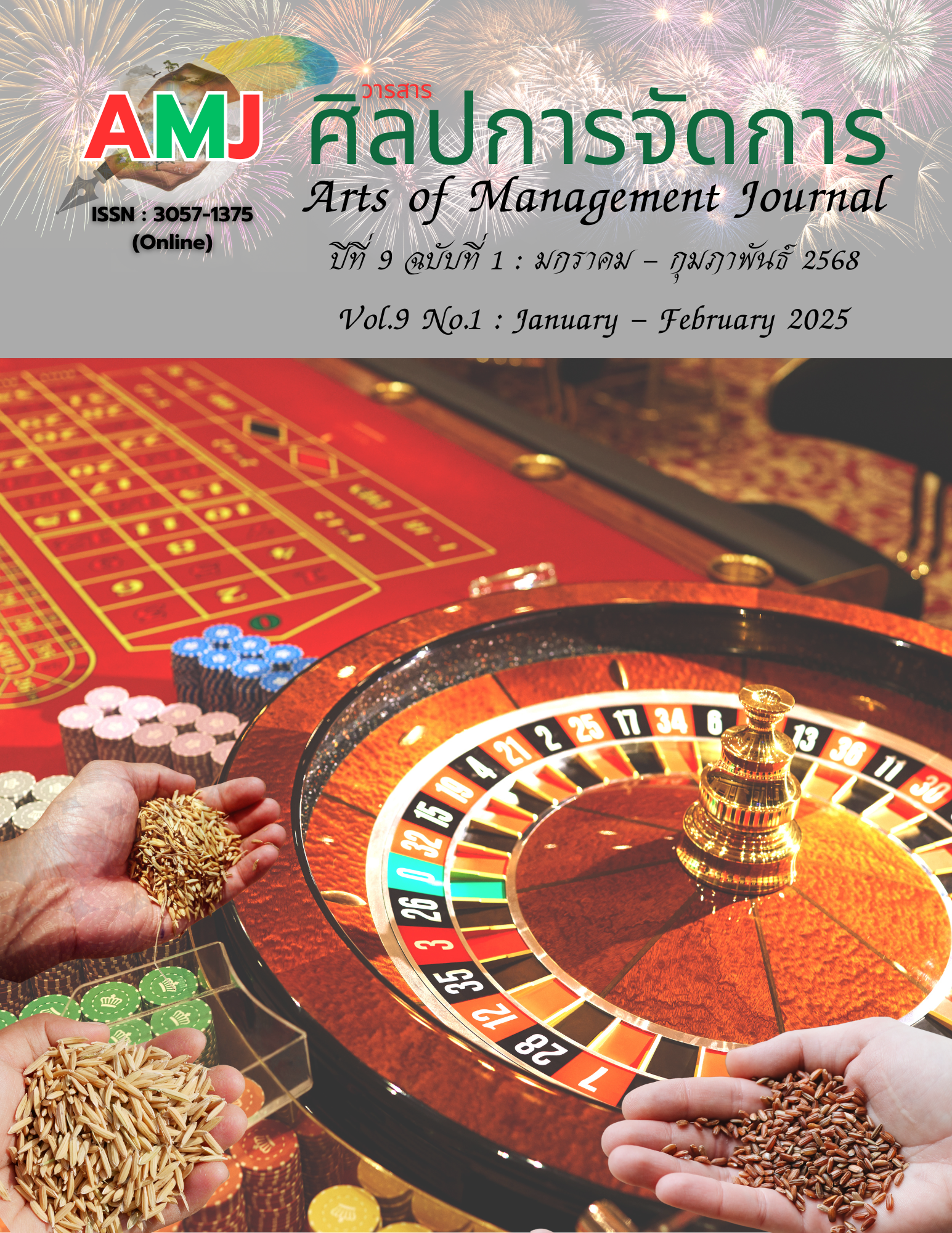การสื่อสารทางการเมืองกับการธำรงรักษาและสร้างความเข้มแข็งให้แก่ระบอบประชาธิปไตย
Main Article Content
บทคัดย่อ
บทความนี้มีวัตถุประสงค์เพื่อศึกษาบทบาทของการสื่อสารทางการเมืองที่มีต่อการธำรงและส่งเสริมความเข้มแข็งของระบอบประชาธิปไตย ผลการศึกษาชี้ให้เห็นว่า การสื่อสารทางการเมืองมีบทบาทสำคัญในการส่งเสริมการปกครองในระบอบประชาธิปไตย ผ่านการทำหน้าที่ถ่ายทอดข้อมูลข่าวสารทางการเมืองอย่างรอบด้าน การเปิดพื้นที่ให้เกิดการแลกเปลี่ยนแสดงความคิดเห็นของฝ่ายต่างๆ อย่างเสรีและเท่าเทียม การทำหน้าที่เป็นตัวแทนของกลุ่มทางสังคมที่หลากหลาย และการตรวจสอบกำกับการทำงานของรัฐและผู้มีอำนาจให้มีความโปร่งใสและรับผิดรับชอบต่อประชาชน บทบาทต่างๆข้างต้นทำหน้าที่อย่างสัมพันธ์และส่งเสริมกันเพื่อส่งเสริมความเข้มแข็งและประสิทธิภาพของระบอบประชาธิปไตย ผลการศึกษาเสนอแนะว่า เพื่อให้การสื่อสารทางการเมืองสามารถทำหน้าที่ดังกล่าวได้อย่างมีประสิทธิภาพ จำเป็นต้องอาศัยปัจจัยสำคัญหลายประการ อาทิ เสรีภาพของผู้ส่งสารโดยเฉพาะสื่อมวลชน ความครอบคลุมและการเข้าถึงของประชาชนทุกกลุ่ม ความรับผิดรับชอบต่อสาธารณะ และการยึดมั่นในจริยธรรมวิชาชีพสื่อ การสร้างเสริมบทบาทของการสื่อสารทางการเมืองต้องอาศัยความร่วมมือจากภาคส่วนต่าง ๆ ในสังคม ในการสร้างเงื่อนไข กลไก และวัฒนธรรมทางการเมืองที่เอื้อต่อการสื่อสารทางการเมืองคุณภาพ เพื่อให้ระบอบประชาธิปไตยมีความมั่นคงและยั่งยืนต่อไป
Article Details

This work is licensed under a Creative Commons Attribution-NonCommercial-NoDerivatives 4.0 International License.
ทัศนะและความคิดเห็นที่ปรากฏในบทความในวารสารศิลปการจัดการ ถือเป็นความรับผิดชอบของผู้เขียนบทความนั้น และไม่ถือเป็นทัศนะและความรับผิดชอบของกองบรรณาธิการ ยินยอมว่าบทความเป็นลิขสิทธิ์ของวารสารศิลปการจัดการ
References
Anderson, B. (2006). Imagined communities: Reflections on the origin and spread of nationalism (Rev. ed.). Verso.
BBC. (2020). Register for Remedies: Analyze various problems to remedy those affected by COVID-19. https://www.bbc.com/thai/thailand-52350798
Bennett, W. L., & Segerberg, A. (2012). The logic of connective action: Digital media and the personalization of contentious politics. Information, Communication & Society, 15(5), 739-768. https://doi.org/10.1080/1369118X.2012.670661
Bennett, W. L., & Pfetsch, B. (2018). Rethinking political communication in a time of disrupted public spheres. Journal of Communication, 68(2), 243-253.
Bruns, A. (2008). Blogs, Wikipedia, Second Life, and beyond: from production to produsage (Vol. 45). Peter Lang.
Castells, M. (2009). Communication power. Oxford University Press.
Chanrojanakit, B., & Supasarn, N. (2024). Hashtags in Thai Politics. King Prajadhipok’s Institute.
Curran, J. (2002). Media and power. Routledge.
Curran, J. (2005). What democracy requires of the media. In G. Overholser & K. H. Jamieson (Eds.), The institutions of American democracy: The press. (pp. 120-140). Oxford University Press.
Dahl, R. A. (1998). On democracy. Yale University Press.
Delli Carpini, M. X., & Keeter, S. (1996). What Americans know about politics and why it matters. Yale University Press.
Democracyforindia. (2024). Platform for Indian Democracy. https://www.democracyforindia.org/
Election Commission. (2023). Election of members of the house of representatives.
https://www.ect.go.th/ect_th/th/db_119_ect_th_download_14
Habermas, J. (1989). The structural transformation of the public sphere: An inquiry into a category of bourgeois society. Polity Press.
Held, D. (2006). Models of democracy (3rd ed.). Stanford University Press.
Herman, E. S., & Chomsky, N. (2010). Manufacturing consent: The political economy of the mass media (Anniversary ed.). The Bodley Head.
Highfield, T. (2016). Social media and everyday politics. Polity Press.
Howard, P. N., & Hussain, M. M. (2013). Democracy's fourth wave? digital media and the Arab spring. Oxford University Press.
Jamieson, K. H. (1992). Dirty politics: deception, distraction, and democracy. Oxford University Press.
Lubken, D. (2008). Remembering the straw man: The travels and adventures of hypodermic. In D. W. Park & J. Pooley (Eds.), The history of media and communication research: Contested memories (pp. 19-42). Peter Lang.
Manovich, L. (2002). The language of new media. MIT Press.
Mazzoleni, G., & Schulz, W. (1999). "Mediatization" of politics: A challenge for democracy?. Political Communication, 16(3), 247-261. https://doi.org/10.1080/105846099198613
McNair, B. (2017). An introduction to political communication (6th ed.). Routledge.
Mosco, V. (2009). The political economy of communication (2nd ed.). SAGE.
Mossberger, K. (2009). Toward digital citizenship: Addressing inequality in the information age. In A. Chadwick & P. N. Howard (Eds.), Routledge handbook of Internet politics (pp. 173-185). Routledge.
Mounk, Y. (2018). The people vs. democracy: Why our freedom is in danger and how to save it. Harvard University Press.
Norris, P. (2000). A virtuous circle: Political communications in postindustrial societies. Cambridge University Press.
Norris, P. (2004). Political communications. In Encyclopedia of government and politics (pp. 1-23). Routledge.
Papacharissi, Z. (2010). A private sphere: Democracy in a digital age. Polity.
Perlmutter, D. D. (2008). Political blogging and campaign 2008: A roundtable. The International Journal of Press/Politics, 13(2), 160-170. https://doi.org/10.1177/1940161208315731
Pew Research Center. (2019, April 29). Many across the globe are dissatisfied with how democracy is working. https://www.pewresearch.org/global/2019/04/29/many-across-the-globe-are-dissatisfied-with-how-democracy-is-working/
Shoemaker, P. J., & Vos, T. (2009). Gatekeeping theory. Routledge.
ThaiPBS. (2024). Arrest the "director." schools in Hat Yai lunch fraud. https://www.thaipbs.or.th/news/content/341387
The Economist Intelligence Unit. (2022). Democracy index 2021: the China challenge. https://www.eiu.com/n/campaigns/democracy-index-2021/
The standard. (2018). Cindy Sirinnya is ready to launch the exhibition "Don't tell me how to dress" to awaken social power. End sexual harassment. https://thestandard.co/cindy-sirinya-dont-tell-me-how-to-dress/
Van Dijk, T. A. (2008). Discourse and power. Palgrave Macmillan.
Willnat, L., & Aw, A. (2009). Political communication in Asia: Challenges and opportunities. In L. Willnat & A. Aw (Eds.), Political communication in Asia (pp. 1-25). Routledge.

